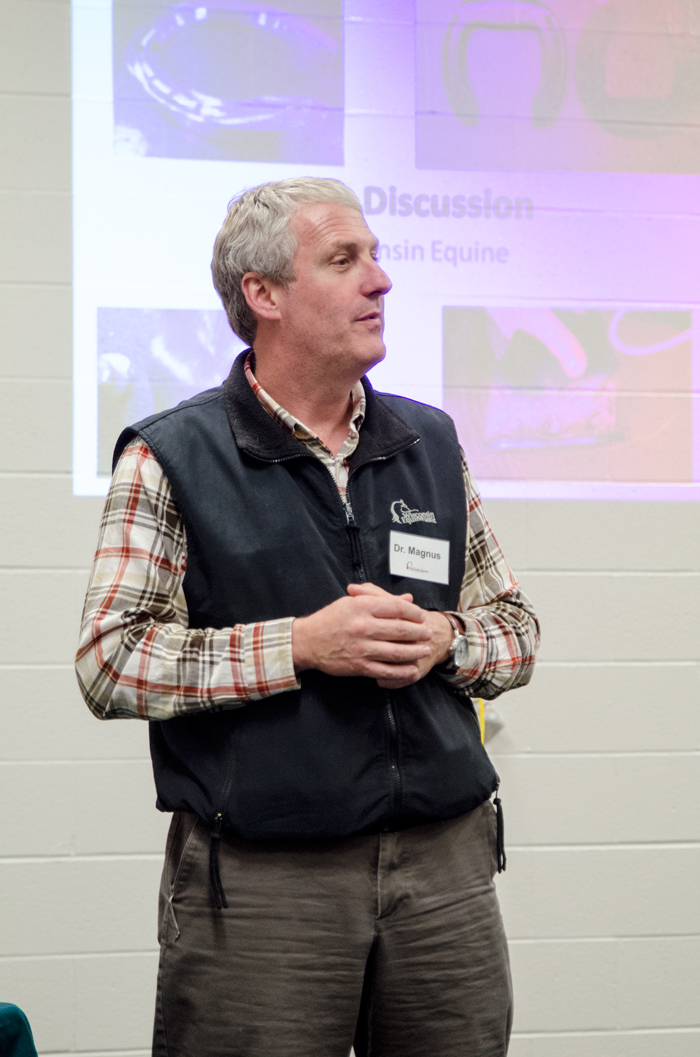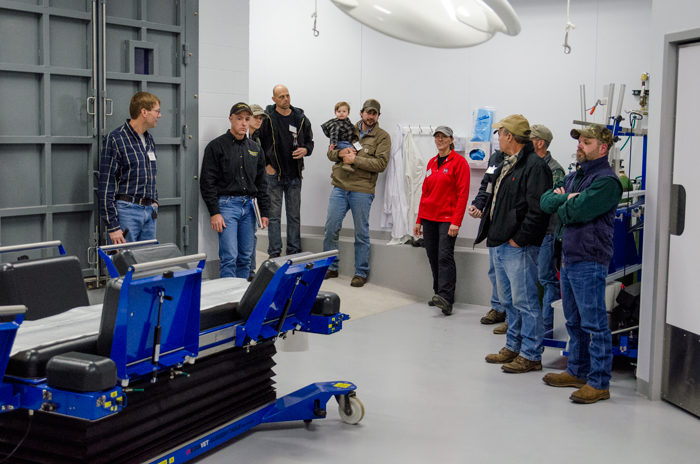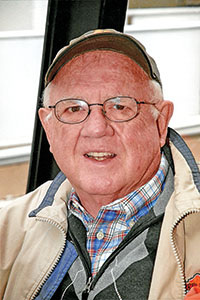A dozen southeastern Wisconsin farriers gathered recently for an exchange of ideas with several veterinarians at the Wisconsin Equine Clinic & Hospital.
Pictured Above: The Wisconsin Equine Clinic & Hospital’s “Farrier’s Night Out” encourages stronger working relationships between farriers and vets.
Equine vet John Pigott, a member of the Oconomowoc, Wis., operation, led a discussion at the “Farrier’s Night Out” session. He emphasized that there are lots of ways to approach different footcare situations, and that there are no right or wrong answers.
Hoof balance was among several issues that were discussed. There was agreement on how horses can get out of balance as the hoof grows out over a 6- or 8-week period between farrier visits.
Evaluating Radiographs
Radiographs also received considerable discussion. This included the importance of obtaining a radiographic view through the coffin joint when dealing with many footcare issues.
When it comes to laminitis issues, several attendees cited the need to be able to make measurements of the hoof. This is an issue when a veterinarian forwards digital X-rays as computerized jpegs since accurate measurements can’t be easily made.
Doug Langer says it is important to hold the foot tight to the X-ray plate to get accurate measurements, such as determining hoof wall thickness.
 Bob Magnus, a vet and president of Wisconsin Equine Clinic & Hospital, says holding educational sessions for farriers and horse trainers promote better equine health care.
Bob Magnus, a vet and president of Wisconsin Equine Clinic & Hospital, says holding educational sessions for farriers and horse trainers promote better equine health care.
“A farrier wants to work with a veterinarian who is very fussy when it comes to taking X-rays if they are to get the most information,” says the Wisconsin Clinic vet.
“In addition, farriers need to make sure they’re evaluating recent X-rays. In fact, it’s not uncommon for a customer to tell a farrier that they have X-rays and when you look at them, you find they were taken 30 months ago.”
Equine vet Lisa Borzynski urges farriers to ask the veterinarians they work with if they can be present when X-rays are taken in he field. “Our vets love to have farriers present so everyone can learn more from the X-rays,” she says.
Bob Mangus, a veterinarian and president of the Wisconsin Equine Clinic, says the staff patterned the farrier meeting after similar ones they’ve held with horse trainers. Thanks to the enthusiasm of the attendees in attendance, similar “Farrier’s Nights Out” may be scheduled in the future.
Monthly Farrier/Vet Sessions In North Carolina
To learn new ways to encourage valuable farrier and veterinary exchanges on footcare, see “Farrier Jam Sessions Expand Hoof-Care Knowledge.” This article explains how North Carolina equine veterinarian Bibi Freer offers monthly sessions to encourage the development of meaningful relationships among area vets and farriers.









Post a comment
Report Abusive Comment